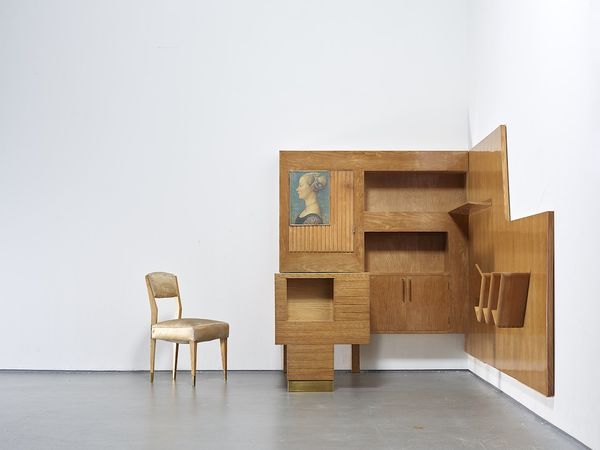Gio Ponti, Desk and chair with integrated ‘Parete attrezzata,' 1950s. Estimate £15,000 - 20,000. Design London.
Even today, more than half a century after its invention, Gio Ponti’s bedroom suite feels exquisitely modern. The oak is warm and inviting; the manipulation of geometry is sharp and energetic. Its three distinct units—the bed, wardrobe, and desk areas—combine Ponti’s technical achievements and structural mastery with a deep understanding of space and perception. But among the bedroom suite’s close relations—beyond the rationalist interiors, beyond the organizational theories of the twentieth century—is the Renaissance studiolo.
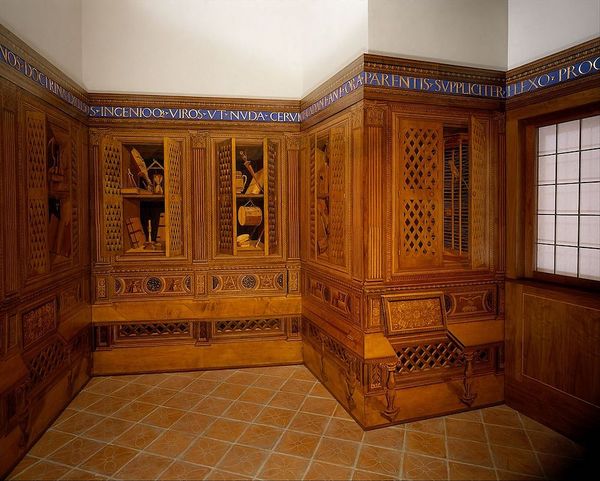
Designed by Francesco di Giorgio, executed by Giuliano da Majano, Studiolo from the Ducal Palace in Gubbio, c. 1478–82. The Metropolitan Museum of Art, New York.
The studiolo was a secluded space with both private and public applications that became popular in the fifteenth and sixteenth centuries. It was the precursor to the study, a room of quiet contemplation and reflection, safe from the bustle of courtly life. In a 1513 letter to a friend, Niccolò Machiavelli described shedding his public self at the door of his studiolo and, in his subsequent intellectual meanderings, communing with the past. “I return home and go to my study; at the entrance I pull off my peasant-clothes,” he wrote. “And thus becomingly re-clothed I pass into the ancient courts of the men of old.”
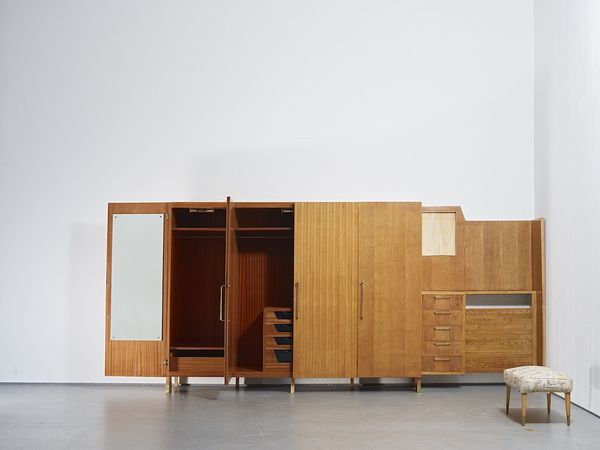
Gio Ponti, Illuminated wardrobe with integrated ‘Parete attrezzata’ and stool, 1950s. Estimate £10,000 - 15,000. Design London.
Likewise, as Brian Kish, curator and specialist in 20th Century Italian Design, explains in the auction catalogue, Gio Ponti’s bedroom suite was a “space to rest and wonder.” The elegantly functional room was designed with absolute attention to what would enchant and enliven a domestic space, making it a comfortable and enriching retreat. Cleverly adapted to the needs of everyday life, the cabinets hug the corners of the room; a wood panel contains a frame ripe for a mirror’s insertion; shelves project themselves accessibly and gracefully; every attention has been made for a symmetrical, harmonious configuration. Even the material denotes comfort. As Kish notes, the oak has warmth that “imparts…its symbolic meanings of strength and knowledge.”

Gio Ponti, Bed with integrated ‘Parete attrezzata,' 1950s. Estimate £12,000 - 18,000. Design London.
In their technique, both the studiolo and the bedroom suite bring out the natural textures of their materials, playing with geometry and illusion. As much it as may have been used for quiet meditation, its perception as a place of intellectual expansiveness—and material lavishness—was just as important. One of the most extraordinary surviving studioli is the studiolo from the Ducal Palace in Gubbio reconstructed at The Metropolitan Museum of Art. The illusionistic space is fabricated with an intarsia technique, demonstrating an incredible virtuosity in imitating the natural world—from the lattice-worked cabinets to the shadows of the objects they “contain.”
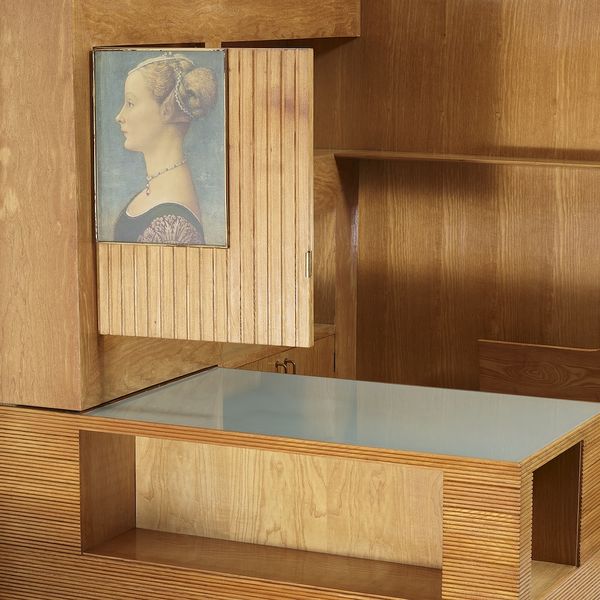
Gio Ponti, Desk and chair with integrated ‘Parete attrezzata' (detail),1950s. Estimate £15,000 - 20,000. Design London.
Working within this exacting tradition, as Kish notes, Ponti “enriched the optical readings of every surface with geometrical and pictorial embellishments as well as varying treatments of oak veneers.” Ponti used the Italian grissinatura technique, situating plain, vertical strips of quartered oak surfaces to expose the depth of the material. His understanding of the oak—as well as his thoughtfulness in form—created a uniform but still enticing space. The different textures produce visual interest while maintaining its sleek modernity.
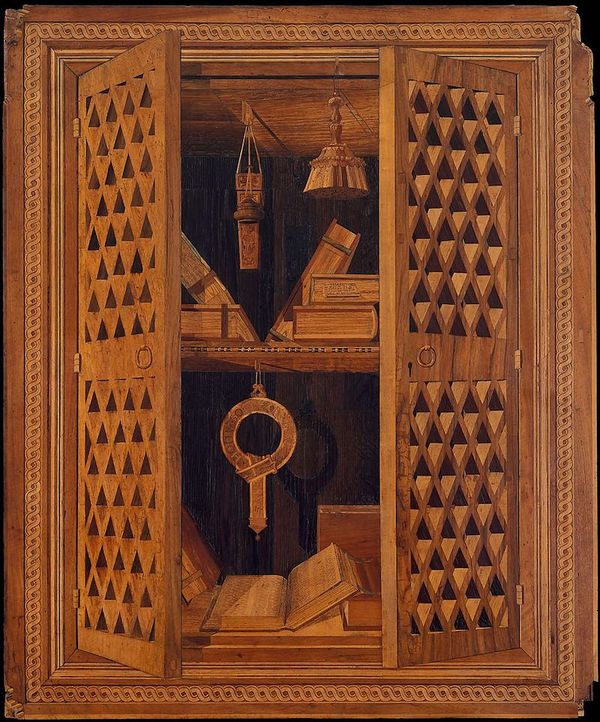
Designed by Francesco di Giorgio, executed by Giuliano da Majano, Studiolo from the Ducal Palace in Gubbio (detail), c. 1478–82. The Metropolitan Museum of Art, New York.
Yet there is one caveat to this comparison—the studiolo was very much an illusion in itself. Despite featuring mathematical and musical instruments, books and animals, and the signifiers of scholarship, to actually access those things, one would have had to visit other spaces in the palace, like the duke’s extensive library. Gio Ponti’s bedroom suite, however, is exactly what it purports to be: a beautiful, thoughtful space designed to hold books and treasures, for living comfortably, as a “space to rest and wonder.”
Discover More from Design London >

Recommended Reading
Modern to Memphis: Radical Italian Design >
Lucie Rie from the Estate of Claire Frankel >
